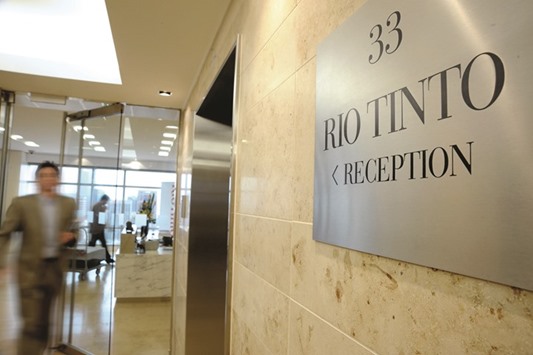Even for the deepest pockets in the mining industry, diamonds are hard to find.
Rio Tinto Group Chief Executive Officer Jean-Sebastien Jacques said this week he’s on the hunt for new diamond mines, but with more than half of the industry controlled by just two companies and new discoveries rare, it’s going to be a tall order.
“There’s not a great deal available,” said Des Kilalea, an analyst at RBC Capital Markets in London. “It’s got to be big, but there are not a lot of those.”
Jacques, who became CEO of the world’s second-biggest miner in July, called diamonds a priority area in a Bloomberg Television interview on Tuesday. The strategy, part of a drive to improve the quality of Rio’s mining assets, marks a turnaround for the company that mulled exiting the diamond business just three years ago.
As one of the world’s top producers of rough gems, Rio operates the large Argyle mine in Australia, which produces low-quality stones, and has a controlling stake in a Canadian mine. The question is where to find new supply.
“Rio might look for a trophy producer,” said Jeremy Wrathall, head of commodities research at Investec in London. “It’s an attractive place to be. The world is running out of diamonds, it’s not running out of iron ore or copper.”
One place to start could be Anglo American’s De Beers unit. The world’s biggest producer controls some of the most attractive mines. The problem is that Anglo would be unwilling to sell the business because diamonds are a core focus of its future, along with platinum and copper.
The alternative could be to attempt to buy Anglo outright, but that would involve inheriting many mines Rio is unlikely to want. It may also be put off by a clause in De Beers’s agreement with Botswana, the source of three-quarters of its carats.
The provision allows the nation to renegotiate the accord if the ownership of De Beers changes.
At the moment, Rio’s earnings from iron ore, aluminium and copper dwarf profits from mining diamonds.
“The diamond business has long been seen as a good business in the mining industry and a source of demand that is uncorrelated to building bridges,” said Paul Gait, an analyst at Sanford C Bernstein. “Rio, like most mining companies, is very heavily exposed to the early cycles of industrialisation and perhaps less exposed to the later cycles of wealth creation as economies mature.”
Another place to grab a bigger share of the diamond world would be Canada, where Rio owns a 60% stake in the Diavik mine. It could either buy the remaining share from Dominion Diamond Corp, or acquire Dominion, which also runs the neighbouring Ekati mine.
Rio put a proposal together last year to buy the Diavik stake and a smaller development project, but it was rejected internally before reaching board level, according to two people familiar with the deal. A spokesman for Rio declined to comment, as did a spokeswoman from Dominion.
The other two major mines in Canada - Gahcho Kue and Victor - are owned or controlled by De Beers. They may also be out of reach because the Anglo unit doesn’t want to risk having all of its assets it southern Africa, where the rest of its projects are.
Another option would be to buy Mountain Province Diamonds’ 49% stake in Gahcho Kue. The company said it’s received unsolicited expressions of interest from third parties in the past, but confidentiality agreements mean it can’t disclose their identity.
That really only leaves a handful of smaller producers, such as Petra Diamonds, Lucara Diamond Corp and Gem Diamonds.
Their mines are unlikely to make a material impact in Rio’s business or meet the company’s ambition to operate so- called tier-one assets. Sales from Petra’s biggest mine totalled $186mn last year, while Gem’s revenue was $250mn.
Dominion rose 2.3% to C$13.81 in Toronto, heading for the highest close since June, while Lucara climbed 2.8% and Mountain Province was unchanged. In London, Gem gained 2.4% and Petra declined 2.7%.
Even if Rio resorts to exploration, new deposits are so hard to find that most of the industry, which has ploughed more than $7bn into exploration since 2000, has all but given up. BHP Billiton, the world’s biggest mining company, has abandoned diamonds altogether. Companies including De Beers, Petra and Gem Diamonds have massively reduced their exploration efforts.
Of more than 6,000 kimberlite diamond pipes tested in the last 140 years, only 60 have been worth mining, according to De Beers.
Jacques’s statement is probably one of “intent, rather than a real strategy,” RBC Capital Markets’ Kilalea said. “They’ll keep looking.”

A man walks through the entrance from the reception area of Rio Tinto’s head office in Melbourne. Rio’s chief executive officer Jean-Sebastien Jacques said last week he’s on the hunt for new diamond mines, but with more than half of the industry controlled by just two companies and new discoveries rare, it’s going to be a tall order.


